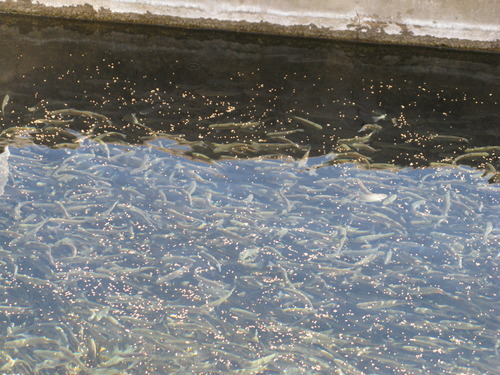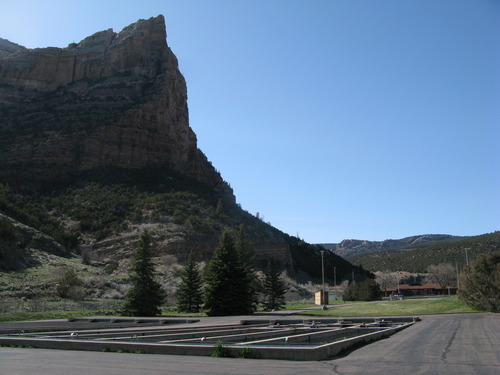This is an archived article that was published on sltrib.com in 2011, and information in the article may be outdated. It is provided only for personal research purposes and may not be reprinted.
Proposed federal budget cuts could lead to empty stringers for Utah anglers. President Barack Obama's proposed 2012 budget would eliminate the state's lone federal fish hatchery at Jones Hole and limit operations at three Utah hatcheries.
Jim Karpowitz, director of the Utah Division of Wildlife Resources (DWR), said he recently received a letter from the U.S. Fish and Wildlife Service informing him that the proposed budget would eliminate $600,000 for the Jones Hole National Fish Hatchery in Uintah County, effectively forcing it to close.
Karpowitz also had a discussion with Reed Murray, director for the Central Utah Project Completion Act, and learned that agency is also facing a budget cut. That reduction would eliminate operation and maintenance funds (roughly $300,000) for three hatcheries managed by the DWR.
"Jones Hole provides a lot of fish for Flaming Gorge and some of the other popular waters in that area. It would leave a hole we likely could not fill," Karpwoitz said. "We will have to dig deep and try to find the money we are losing [for the state hatcheries]. This is only one of the budget cuts we are going to be dealing with."
The federal hatchery, on a tributary to the Green River, provides 450,000 8- to 10-inch rainbow trout and 300,000 fingerling kokanee salmon annually for nearby Flaming Gorge Reservoir.
In 2008, Jones Hole was producing an average of1 million fish weighing about 200,000 pounds. Other Utah waters that have received fish from Jones Hole include Steinaker, Red Fleet, Matt Warner, Calder and Big Sand Wash reservoirs.
Construction on the Jones Hole National Hatchery was begun in 1968 as mitigation for the dam at Flaming Gorge Reservoir and to help meet the federal government's obligation to provide fish for American Indian tribes. Trout from the federal hatchery are also shipped to waters on the Uintah and Ouray Reservation in Utah and the Wind River Reservation in Wyoming.
Karpowitz said his agency is working on a response to the U.S. Fish and Wildlife Service letter "reminding them of their mitigation responsibility and the need to maintain the hatchery."
The state wildlife director said there is no way Utah could take over management of Jones Hole. "We are struggling to keep our existing hatchery system going," he said.
Murray said his office, charged by the U.S. Department of Interior with delivering water from the Colorado River to central Utah and mitigating environmental aspects along the way, would still be able to provide operating and maintenance funds to the Big Springs Tribal Fish Hatchery on the Uintah and Ouray Indian Reservation and the DWR's Fisheries Experiment Station in Logan.
However, funds to the state's Kamas, Whiterock and Fountain Green hatcheries would be cut. Those hatcheries do not rely entirely upon federal money, but it provides a good share of the annual operating budget of each facility.
Murray said his office asked for $692,000 for the hatcheries in the 2011 budget, which still has not been finalized, and approximately $350,000 for the 2012 budget.
"We are certainly supportive of trying to balance the budget," Murray said. "It is unfortunate we have to make these very difficult decisions. Hopefully, the state will be able to work with what they have and not have a significant impact on their operations."
While the proposed budget cuts may not materialize, Karpowitz is already looking for other sources of fish and money.
According to the DWR's website, http://www.wildlife.utah, 30 percent of the state wildlife agency's revenue comes from federal funds. —
Jones Hole National Fish Hatchery
Created in 1968 to help mitigate effects of construction of Flaming Gorge Dam, the hatchery sits on springs feeding Jones Hole Creek in Uintah County, 40 miles northeast of Vernal. The hatchery has 10 outdoor raceways and produces rainbow, brown and cutthroat trout as well as kokanee salmon.







